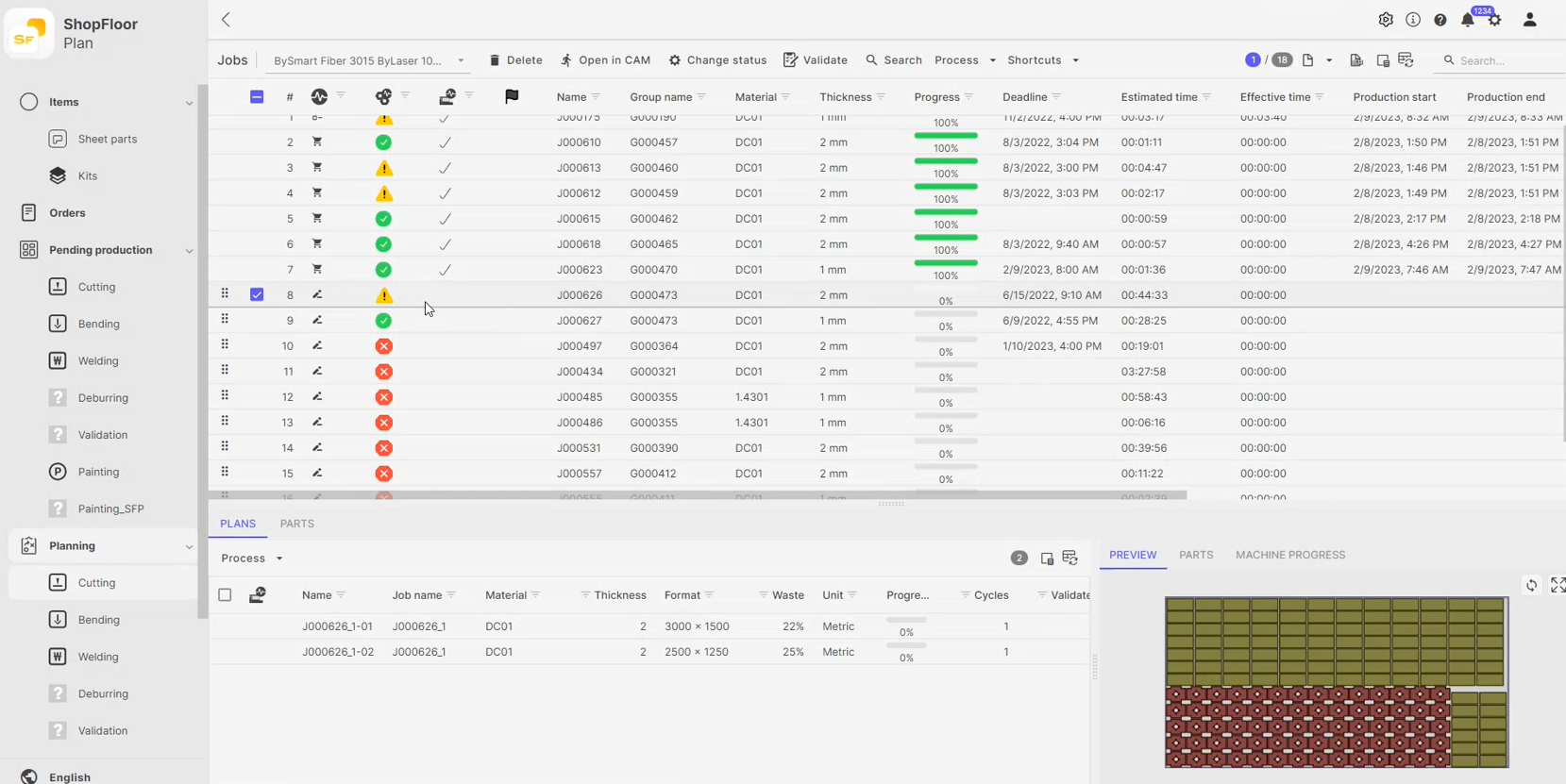 In today’s competitive fabricating environment, the reduction of non-value manufacturing time and total processing times is essential for maintaining a competitive edge. From the moment an order is received until it ships, the entire fabrication process needs to be streamlined. Emphasizing the importance of digitalization and automation, analyzing total cycle time, maintaining machine cycle time, and reducing the overall order turnaround time is key to remaining competitive.
In today’s competitive fabricating environment, the reduction of non-value manufacturing time and total processing times is essential for maintaining a competitive edge. From the moment an order is received until it ships, the entire fabrication process needs to be streamlined. Emphasizing the importance of digitalization and automation, analyzing total cycle time, maintaining machine cycle time, and reducing the overall order turnaround time is key to remaining competitive.
Digitalizing the Front-End Order Process
Utilizing a digital order management system can effectively eliminate paper trails by digitalizing and automating various order-related processes.
Digital Order Entry: Rather than relying on paper-based order forms, customers can submit their orders electronically through online portals or electronic data interchange (EDI). This digitized process eliminates the need for physical paperwork and ensures that the order data is directly entered into the system.
Electronic Documentation: Storage and management of all order-related documents electronically.
This includes order details, purchase orders, invoices, shipping labels, and other relevant paperwork. Users can access these documents digitally, reducing the need for printing and physical filing.
Digital Reporting and Analytics: Comprehensive reporting and analytics capabilities.
Businesses can generate digital reports on order status, inventory levels, machine KPIs, and other key metrics. These reports are easily shareable digitally, reducing the need for printing and distributing physical copies.
Controlling Front-End Processing Times
While some companies measure set-up times, hard machine manufacturing times, and waiting times once an order reaches the fabrication floor, they often overlook the soft processing times. Soft processing includes order entry, production planning, engineering, and programming. All of these aspects need to be considered to accurately measure the turnaround time. Companies that efficiently manage both hard and soft processing times and can deliver faster and more efficiently win more orders.
Analyzing Total Cycle Time
Conducting a comprehensive analysis of the total cycle time at each stage of the order process (see below) is crucial. Companies should assess these cycle times and see how they contribute to the overall cost per part and to turnaround times.
Streamlining with digitalization and automation technologies increases workflow efficiency and reduces order times.
- Order entry time into the ERP system is reduced.
- The time needed for creating the Bill of Materials (BOM) and production planning is reduced.
- Allocation time for raw materials is reduced.
- The time needed by engineering and programming to provide machine programs is reduced.
- Material bottlenecks are reduced.
- Manual order tracking and reporting are reduced
Managing Orders and Planning
Companies have streamlined the entire order process by using an Enterprise Resource Planning (ERP) software system to streamline incoming orders. In addition, a Manufacturing Execution System (MES) software module like the Bystronic Bysoft Suite Shop Floor module provides the ability to plan, monitor, and track all of the active jobs and machine workloads. This enables managers to react on short notice to ever-changing production requirements.
Maintaining Machine Cycle Time
While new machines offer enhanced productivity, their efficiency relies on timely material handling. Without a well-organized material automation system, the machines can sit idle, making the investment in faster machines less cost-effective. Material automation is the key to reducing non-productive manufacturing times and keeping the machines running optimally.
Material Automation and Its Benefits
Efficient material automation ensures that materials are readily available when orders are transmitted to the machines. As the machine processes one sheet, the automation prepares the next sheet for processing, and the finished products are unloaded while the next sheet is being processed. This approach minimizes non-productive waiting times, ensuring consistent and maintained machine cycle times.
Reducing Total Order Turnaround Time
Efforts to streamline the front-end processing, reduce non-productive times, and optimize order cycle times contribute significantly to reducing the overall order turnaround time. One of the keys to competitive differentiation lies in investing in equipment only after a thorough analysis of non-productive times, ensuring that the investment leads to tangible improvements in efficiency.
Digitalization and automation are paramount in reducing non-value manufacturing time and total processing times in a fabricating environment. By focusing on front-end processing, total order times, maintaining machine cycle times, and minimizing non-productive times, companies can achieve higher productivity and quicker turnaround times, and gain a competitive edge in the market.
By Frank Arteaga, Regional Director Marketing – Americas
Bystronic Inc., Hoffman Estates, IL
Voice.bystronic@bystronic.com
